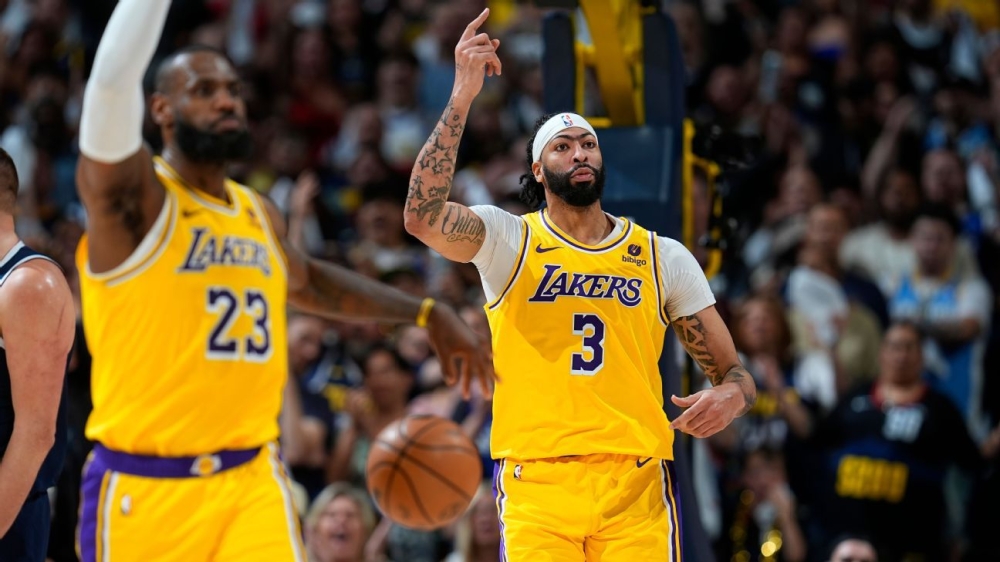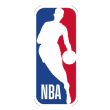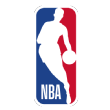Real or not? Examining eight key NBA early season trends

Two weeks into the 2024-25 NBA season, plenty of trends and early season developments have already stood out.
The defending champion Boston Celtics and West favorite Oklahoma City Thunder are near the top of their conference standings, as expected. But there have been some interesting surprises.
The Golden State Warriors boast the NBA’s second-best point differential (behind Oklahoma City and its stifling defense) despite losing Klay Thompson in free agency and playing three games without Stephen Curry.
Curry’s brief absence hasn’t stopped teams from hoisting 3-point attempts at new record rates, while offenses are also benefiting from more whistles than we saw at the end of last season.
One of the players drawing many of those fouls is the NBA’s unexpected leading scorer, Los Angeles Lakers big man Anthony Davis.
Meanwhile, rookies from what was considered a relatively weak draft are off to a slow start. So too is last year’s Rookie of the Year, Victor Wembanyama, who posted a rare 5×5 stat line last week but hasn’t been scoring as prolifically as during his rookie season.
Let’s take a look at the underlying numbers and history to evaluate which of these trends are real and which might not last beyond November.
Jump to a section:
More 3-point shooting? | Warriors to stay hot?
Lakers MVP: Davis over LeBron? | Wemby in a scoring lull?
Fouls back up? | Thunder’s defense to make history?
Will the rookies rise up? | West teams to dominate East teams?


Trend: Copying the Celtics? More teams firing up 3s
Your eyes don’t deceive you: NBA teams are taking more 3-pointers than ever. Through the first two weeks of the season, 42% of all shot attempts have been 3s, which would surpass the 40% mark in 2021-22 for the most in NBA history. That’s interesting because 3-point attempts had largely stabilized since 2019-20 after a decades-long upward trend.
The Celtics parlaying the league’s highest attempt rate (47% of shots during the regular season) into a Finals win over the team that ranked second (the Dallas Mavericks at 44%) seems to have influenced the rest of the NBA to double down on 3s.
Verdict: Real
Historically, there’s not much evidence of a copycat effect translating into more 3s. We saw no such impact after the Warriors won the 2022 title with the league’s second-highest 3 attempt rate. Instead, 3s actually went down across the league the following season.
Still, this trend is likely to persist. Only once in NBA history has the league’s 3-point attempt rate changed by more than 1.5 percentage points in either direction from this point to the end of the regular season. So get ready for a new record number of 3-pointers.

Trend: The Warriors will continue winning by wide margins
There are four teams outscoring opponents by double-digit points per game, with a wide gap between that group and the fifth-best team by this metric (Sacramento, plus-4.3 PPG). Three teams were predictable: The Celtics and Thunder topped my stats-based projections, and the Cleveland Cavaliers had the fourth-best projection.
That leaves Golden State as the outlier. The Warriors had a good, but not great wins projection in my model (an average of 44.8 wins), and a more modest 43.5 wins over/under total at ESPN BET. Yet despite the loss of Thompson — who has fit well with the Mavericks — Golden State has matched its 6-1 start in 2021-22, when the Warriors last won the title.
Verdict: Probably not real
There are multiple reasons to be skeptical of Golden State’s start. Per ESPN’s Basketball Power Index, the Warriors have played far and away the NBA’s easiest schedule. An average team would win 60% against Golden State’s opponents after factoring in location and rest; no other team has a schedule easier than 57.5%. That will inevitably even out. So too will the Warriors’ opponent shooting.
Teams are hitting a league-low 28% of their 3s against Golden State. That can’t possibly continue. No team has seen opponents shoot worse than 31% from 3 over a full season in the past two decades. The Warriors have played well enough so far to consider them favorites to finish in the top four in the West. Staying with Oklahoma City atop the conference seems less likely.

Trend: Anthony Davis has been the Lakers’ best player
In 2014, I wrote that LeBron James‘ age and Davis’ development made it inevitable that Davis would surpass his future teammate in terms of value. A decade later, it might finally be happening. Davis is averaging a career-high 32.6 points, more than 10 more than James, whose 21.9 average would be his lowest since his rookie season. Davis has pushed his usage rate to 32%, up from 27% a season ago, and many of those possessions have come from James. His usage has dropped from 29% to a career-low 25%.
Verdict: Mostly real
Amusingly, James’ low usage was one of my early season trends a season ago, when I deemed it “not real” based on his history of ramping his workload up over the course of the season.
But James’ usage barely budged the rest of the way. Given his age (40 in December) and intent to play as many games as possible, shifting more of the offensive load to Davis is an easy way to keep James fresh.
On the other side of the equation, little of Davis’ start looks fluky. Despite increased usage, his shot quality is nearly the same as last season, based on Second Spectrum tracking. Davis is attempting just 1.9 shots per game with a defender closer than two feet to him, down from 3.0 last season, according to Second Spectrum tracking.
The one potential concern is Davis has been well-rested and might slow down as nicks accumulate over the course of the season. He aggravated a left foot injury late in Monday’s loss to the Detroit Pistons. Barring a more serious injury, I’d still bet on Davis to finish as the Lakers’ most valuable player.

Trend: Victor Wembanyama is in a scoring lull
Last year’s No. 1 pick averaged 21.4 points in winning Rookie of the Year, including 23.5 PPG after the All-Star break when his minutes were no longer limited.
Along with the offseason addition of point guard Chris Paul, high expectations for Wembanyama were created for Year 2. Instead, Wembanyama is averaging just 18.9 points, down from this point a year ago.
Verdict: Somewhat real
The good news is that part of the reason Wembanyama’s usage rate is down (from 32% as a rookie to 29% this season) is frontcourt-mate Jeremy Sochan developing into an offensive threat. Sochan has pushed his share of the San Antonio Spurs’ offense from 19% to 24% while simultaneously boosting his efficiency, a welcome development long term.
The downside is Sochan scoring inside has encouraged Wembanyama to spend too much time on the perimeter, which might now change after ESPN’s Shams Charania reported Tuesday that Sochan will be sidelined due to surgery on a fractured thumb. Though Sochan’s average shot distance has dropped from 11 feet to 6.9 feet, per Basketball-Reference.com, Wembanyama’s has gone up from 13 feet to 16. The majority of Wembanyama’s shots have come outside the paint (52% per NBA Advanced Stats) and he continues to struggle as a 3-point shooter (22%).
According to Second Spectrum, Monday’s loss to the LA Clippers — in which Sochan sat out the second half — was the first time Wembanyama has taken more than seven paint shots in a game this season after doing so 39 times in 71 games as a rookie. Not coincidentally, Wembanyama scored 16 points after halftime with more spacing around him. The Spurs must figure out how to activate Wembanyama in the paint once Sochan returns.

Trend: Foul play! The whistles are back
Last season’s midstream change to allow defensive players more contact, particularly on drives, seems not to have carried over in the wake of the NBA’s preseason point of emphasis on defenders moving drivers off their straight-line path to the basket.
We saw a dramatic change in fouls per game over the course of the 2023-24 campaign. Through the end of January, there were an average of 19.6 fouls per game leading to 22.9 free throws.
Over the season’s final two-plus months, those marks dropped to 17.6 fouls and 20.1 free throws. So far this season, both fouls (20.8) and free throws (23.8) are back up — higher, in fact, than they were this time a year ago.
Verdict: Wait and see
From a statistical perspective, we have more than enough data to say something has changed in how the game is officiated from the end of the 2023-24 season. More than other statistical factors, though, fouls are subject to nonrandom changes based on how players and officials adjust.
It probably wasn’t a coincidence that last season’s changes followed a much-publicized jump in scoring. Players suggested allowing more contact in a story ESPN’s Tim Bontemps and I wrote about the offensive surge. Despite free throws being up, scoring hasn’t yet reached last season’s heights.
Already, we’re seeing some adjustment. As noted by John Hollinger of The Athletic, foul rates have been dropping over the past week after peaking early.
View this post on Instagram

Trend: The Thunder defense is in a league of its own
After holding the Orlando Magic to 86 points Monday, Oklahoma City’s defensive numbers look like a throwback to a different NBA era. The Thunder are giving up only 95.9 points per game, 8.4 fewer than any other team. And opponents are scoring 93.8 points per 100 possessions. Only the Warriors (102.1) are within 13.7 points of Oklahoma City’s preposterously low defensive rating.
Verdict: Not real, but still scary for opponents
Will the Thunder become the first team since the 2015-16 Spurs to hold opponents below a point per possession? Probably not. Like Golden State, Oklahoma City is benefiting from unsustainably poor opponent 3-point shooting (28%).
The Thunder’s schedule has also been on the easy side, including a matchup against Orlando without injured All-Star Paolo Banchero. Dunksandthrees.com rates Oklahoma City’s opponents third-worst offensively thus far after accounting for injuries.
At the same time, the troubling thought for opponents is that the Thunder have played without one of their better defenders, new center Isaiah Hartenstein. Oklahoma City has given up 5.3 more points per 100 possessions with starting center Chet Holmgren on the bench, per NBA Advanced Stats. The Thunder have used 6-foot-10 combo forward Ousmane Dieng as their center for most of those minutes.
When one of the NBA’s top rim protectors last season in Hartenstein returns, Oklahoma City’s defense could become even more formidable.


Trend: Rookies will have a limited impact
Tom Haberstroh of Yahoo! Sports initially noted that no rookie had played 30 minutes or scored even 15 points in the season’s first week. It was only Monday when Washington Wizards forward Kyshawn George and Memphis Grizzlies center Zach Edey became the first rookies this season to have a game with 20 or more points.
Edey (11.1) and Wizards guard Bub Carrington (10.3) are now averaging double-figure scoring, though they still have a ways to go to catch Kenyon Martin, whose 12.0 PPG in 2000-01 were fewest in modern NBA history by the leading scorer among qualifying rookies.
And the leader in rookie playing time (Carrington, 29.2 minutes) is ahead of only Brandon Ingram’s average (28.9) in 2016-17, when No. 1 pick Ben Simmons sat out the season because of injury. Every other season in NBA history has seen at least one rookie average 32 minutes.
Verdict: Probably not real
It’s worth remembering that rookie playing time tends to increase over the course of the season as injuries mount and teams pivot toward rebuilds. Rookies are now playing an identical share of minutes (6.6%) as last season and more than in 2022-23 (5.8%). They ended those seasons playing over 8% of all possible minutes.
Without a signature star like Wembanyama or even 2023 No. 2 pick Brandon Miller, it’s possible — perhaps even likely — that this season won’t feature any qualifying rookie scoring 15 PPG for the first time since 2016-17, when second-round pick Malcolm Brogdon won Rookie of the Year because Joel Embiid played only 31 games because of injury.
At the same time, plenty of rookies are contributing without big scoring totals. Portland Trail Blazers center Donovan Clingan and Washington Wizards forward Alexandre Sarr have impressed as shot blockers, while Ryan Dunn has been a valuable 3-and-D player for the Phoenix Suns and Toronto Raptors big men Jamison Battle and Jonathan Mogbo are getting good minutes off the bench. There’s hope yet for this season’s rookie class.

Trend: West dominating the East
After a season in which 11 Western Conference teams were .500 or better, and a pair of 46-win teams (the Warriors and Sacramento Kings) missed the playoffs, we expected the West to be the stronger conference. Yet nothing could have prepared for the lopsided start to interconference matchups. West teams have gone 21-9 (.700) against the East thus far with a plus-5.4 point differential in those games.
Since the ABA-NBA merger in 1976, the high-water mark for conference domination was the East winning 64% of head-to-head matchups in 1988-99. And the East had actually been the better of the two conferences in both 2021-22 and 2022-23, making the past two seasons a dramatic turn from recent parity.
Verdict: Mostly not real
There is a history of the interconference battle shifting over the course of the season. In 1996-97, East teams started the season 21-9 against the West, but were just 32 games above .500 the rest of the way, resulting in a modest 54.5% final head-to-head rate. This early in the schedule, interconference games aren’t yet evenly distributed.
The East’s two best teams, Boston and Cleveland, have played a combined one game against the West — the Cavaliers crushing the Lakers by 24 points in the largest East win over a West team so far this season. Meanwhile, the Chicago Bulls and Raptors have played a combined nine games against the West. The West should retain the upper hand all season, but the series probably won’t remain this lopsided.
Source: espn.com
